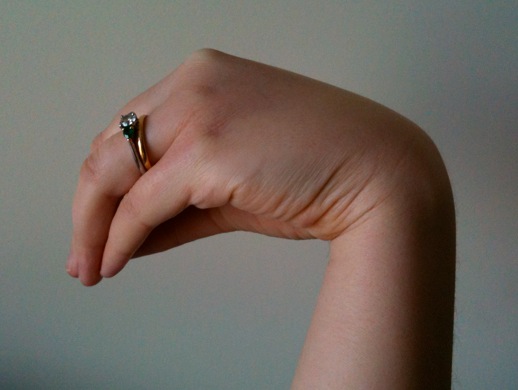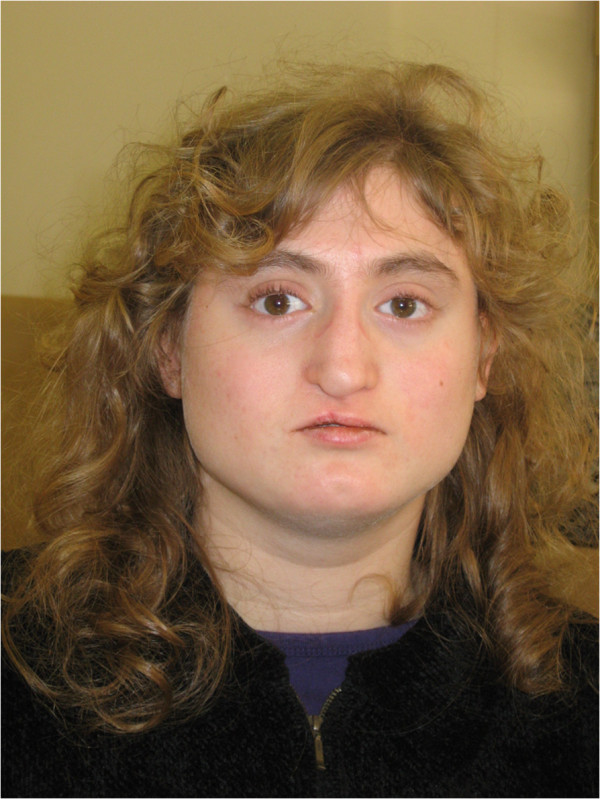Playlist
Show Playlist
Hide Playlist
Hypoparathyroidism
-
Slides Hypocalcemia EndocrinePathology.pdf
-
Reference List Pathology.pdf
-
Download Lecture Overview
00:01 Our topic still continues with hypoparathyroidism. 00:03 Botched thyroidectomy… apart from where the patient initially might have started with primary hyperparathyroidism and there might have been inadvertent, excessive parathyroidectomy resulting in hypoparathyroidism. 00:17 If the patient is required to have a thyroidectomy because of its proximity to the parathyroids may result in excess or collateral damage to the parathyroids rendering your patient hypoparathyroid, hypocalcemic. 00:34 Congenital deficiency... here, you should be thinking about DiGeorge syndrome. 00:38 You have your chromosome 22, a long arm 11 deletion, therefore third and fourth pharyngeal pouches are missing, no parathyroids are present. 00:46 In addition, the third pharyngeal pouch responsible for developing the inferior parathyroids, the patient, the child is hypocalcemic; in addition, the thymus does not form properly. 00:57 Therefore; look for a child that is suffering from tetany, hypocalcemia; result in tetany, muscle twitching. 01:06 In addition, there might be recurrent infection. 01:08 Usually, it will be the viral type; malformed third and fourth pharyngeal pouches resulting in hypoparathyroidism. 01:19 Abnormal facies, sometimes with your chromosome 22, you want to be familiar with the syndrome congenitally that the boards love asking about called velocardiofacial abnormalities. 01:32 The velocardiofacial abnormalities may result in facies issue, congenital heart defects and cognitive behavior and psychiatric problems, autism. 01:44 Velocardiofacial issues with chromosome 22, something that you want to know from a embryologic, pathologic point of view. 01:54 Increased susceptibility to infection, why is that? Because the thymus may not be present, inadequate education of your T-cells, therefore rendering the patient susceptible to infection, the child. 02:06 Other causes of hypoparathyroidism: Idiopathic, autoimmune disease resulting in parathyroid destruction. Here’s an interesting example to keep in mind: Autoimmune polyendocrinopathy-candidiasis-ectodermal dystrophy syndrome, also known as polyglandular autoimmune syndrome type 1, is an inherited disorder that causes hypoparathyroidism and is associated with chronic mucocutaneous candidiasis and adrenal insufficiency. 02:37 Lastly, infiltrative diseases are a rare cause, such as hemochromatosis, Wilson disease, granulomatous disease, or metastatic cancer. 02:48 Clinical features include the following: whenever there is decrease in parathyroid, there will obviously be decrease in calcium and therefore, the muscle, the skeletal muscle is extremely sensitive to certain tapping. 03:03 Tapping of the facial nerve may result in contraction of muscles of the eyes, nose and mouth and we then refer to as being Chvostek sign. 03:13 There might be circumoral numbness or paraesthesia of distal extremity and perhaps carpopedal spasms, especially when there is a, let’s say, a brachial cuff that is placed around the arm. 03:27 Mental status changes, QT prolongation might be seen with hypoparathyroidism and hypocalcemia; serum calcium will be low here because there’s decreased levels of PTH; decreased ability to properly evacuate the phosphate from your kidney. 03:44 So, therefore, there will be increased phosphate levels. 03:48 In addition, because of decreased PTH in circulation, the osteoclasts will not function as well as they should. 03:58 And so, therefore, there will be thickening of the bone. 04:01 The thickening of the bone, pay attention here, we’re now referring to osteoporosis, this is osteosclerosis and that to you should indicate or def-defines thickening of your bone. 04:15 Topic… hypoparathyroidism.
About the Lecture
The lecture Hypoparathyroidism by Carlo Raj, MD is from the course Parathyroid Gland Disorders.
Included Quiz Questions
Which chromosomal abnormality is associated with DiGeorge syndrome?
- 22q11 deletion
- 11q9 deletion
- Trisomy 15
- 17q point mutation
- XXY karyotype
A child with a history of recurrent viral infections presents with hypocalcemia. What structures were most likely affected during childhood development?
- 3rd and 4th branchial pouches
- Bilateral adrenal glands
- Rathke's pouch
- Mesodermal structures of the head and neck
- Structures of the lung derived from neural crest cells
What is the purpose of Chvostek's test?
- Tetany with neuromuscular irritability
- Mental status changes
- Circumoral numbness
- Osteosclerosis
- Carpopedal spasm
Customer reviews
1,2 of 5 stars
| 5 Stars |
|
0 |
| 4 Stars |
|
1 |
| 3 Stars |
|
0 |
| 2 Stars |
|
0 |
| 1 Star |
|
15 |
16 customer reviews without text
16 user review without text





